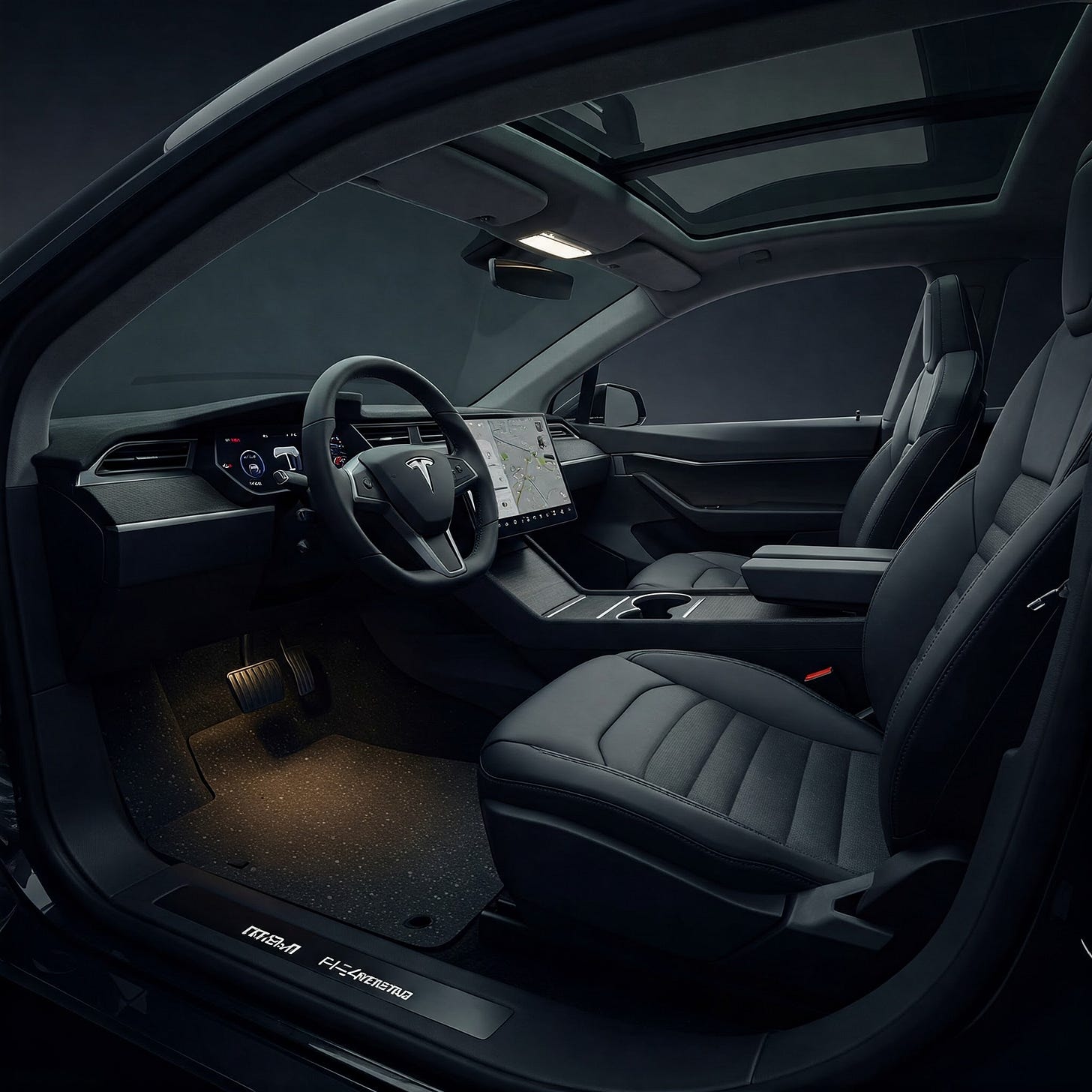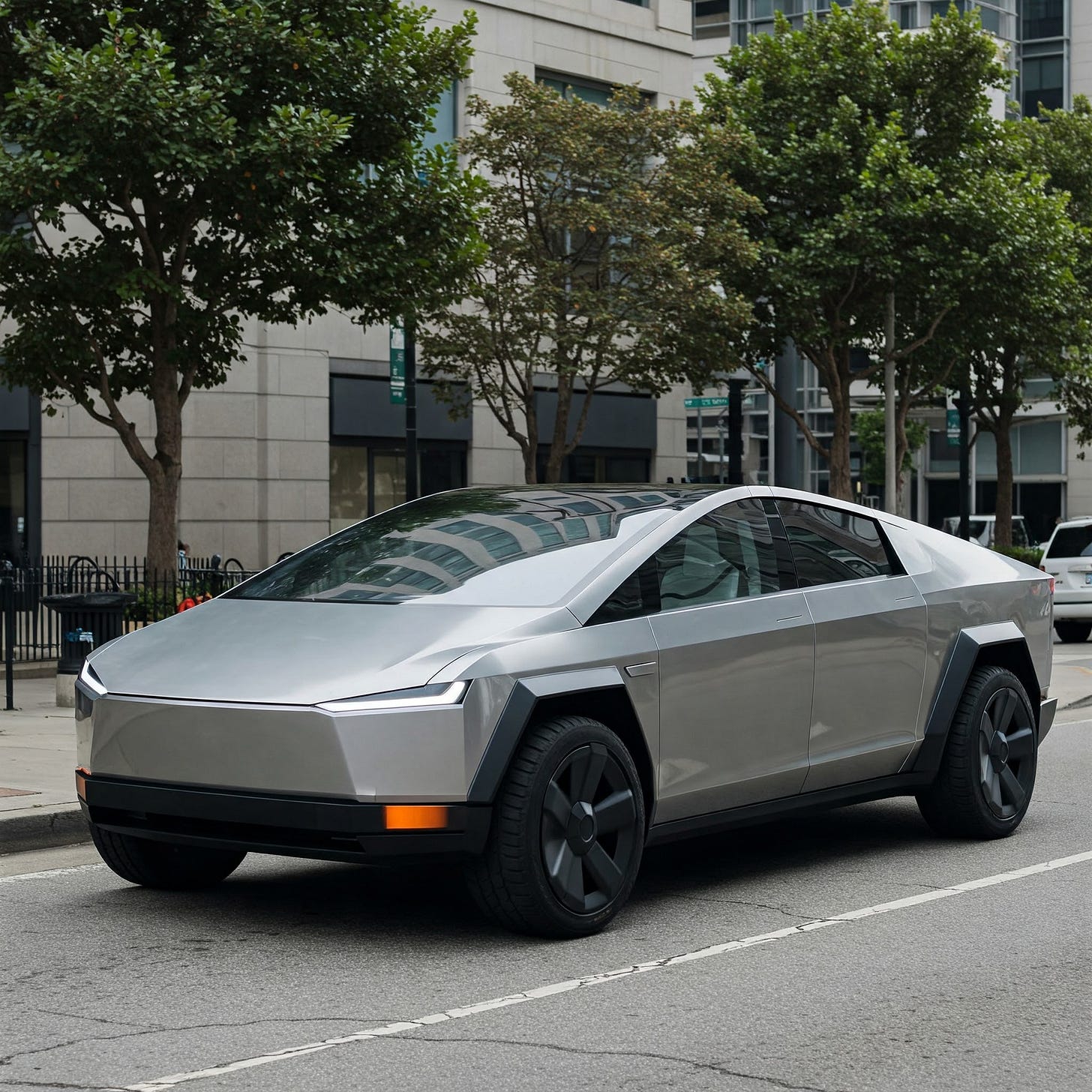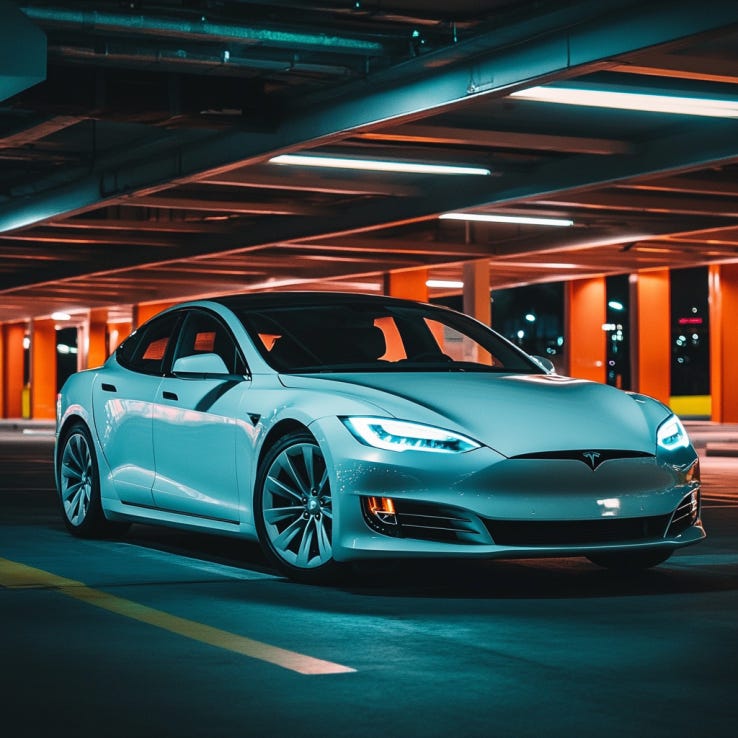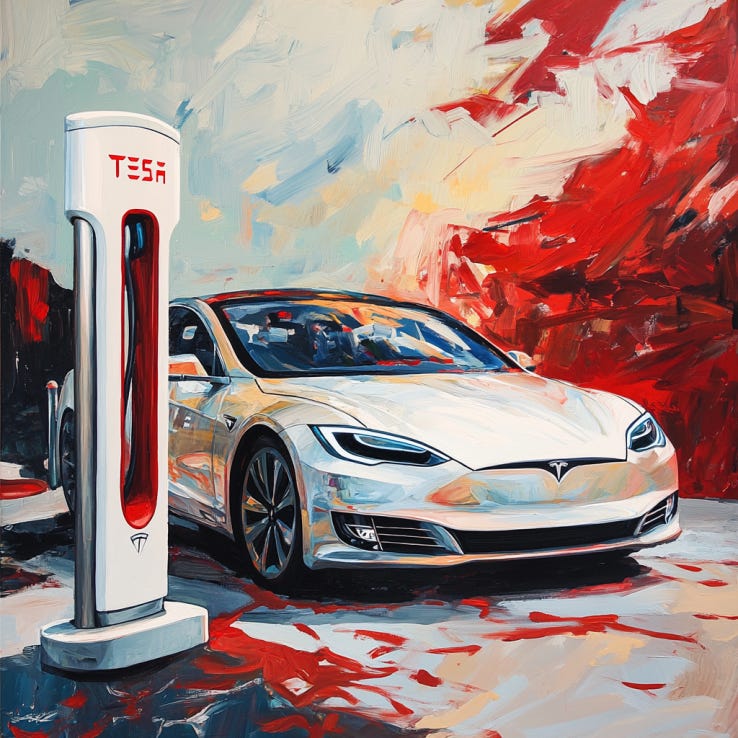When Will Tesla's Full Self-Driving (FSD) Achieve Level 4 & Level 5 Autonomy? (Estimated Odds & Predictions)
When will Tesla achieve L4? L5 FSD anytime soon?
Tesla’s ambition to achieve full self-driving (FSD) autonomy has long been the subject of both bold public claims and cautious skepticism.
Over the past decade, Tesla’s promises—from coast-to-coast driverless demos to a full robotaxi fleet—have repeatedly been delayed.
Tesla’s Historical Promises vs. Actual Progress
Official Targets
Level 4 (Robotaxi) Claims: Elon Musk has repeatedly stated “later this year” or “next year” since 2019. More recent remarks reference a “robotaxi-ready” vehicle by 2026 (often called the “Cybercab” or dedicated robotaxi).
Level 5 Claims: Since 2016, Musk has proclaimed that full self-driving (with no driver oversight) is “1–2 years away.” In mid-2023, he predicted true self-driving could be available “by late 2023 or early 2024.”
Historical Pattern vs. Reality
Missed Deadlines: Prior targets such as a coast-to-coast autonomous drive by 2017, 1 million robotaxis by 2020, and unsupervised urban driving have not been met.
Current Status: Tesla’s Autopilot and FSD Beta systems have improved highway and simple urban performance but still require active driver supervision (classified as Level 2).
READ: Tesla FSD 2025 Progress Analysis
Key Constraints Influencing Tesla’s Progress
Sensor Strategy & Edge Cases
Vision-Centric Approach: Tesla relies almost exclusively on cameras—with limited radar in HW4—in contrast to competitors that employ lidar and multi-sensor fusion. This approach benefits from scale and cost efficiency but can be challenged by adverse weather, low-light conditions, and complex environments.
Edge Cases: Rare and unpredictable scenarios (such as unprotected turns, erratic pedestrian behavior, and sudden obstacles) remain difficult for Tesla’s neural networks to handle reliably.
READ: LiDAR is the Gold Standard for L4 AVs in 2025
Tesla’s Hardware Evolution
HW1 (2014-2016)
Introduced in October 2014 as Tesla’s first-generation Autopilot hardware.
Equipped with a single front-facing camera, forward radar, and ultrasonic sensors.
Utilized Mobileye’s EyeQ3 chip for driver assistance features.
Had limited autonomy, enabling basic lane-keeping and adaptive cruise control.
HW2 (2016-2017)
Released in October 2016, marking Tesla’s shift away from Mobileye.
Included 8 cameras, forward radar, and 12 ultrasonic sensors for a 360-degree perception system.
Lacked significant software capabilities initially, but Tesla developed its own computer vision stack to replace Mobileye.
HW2.5 (2017-2019)
A mid-cycle upgrade introduced in August 2017.
Featured more computing power, a secondary GPU, and improved redundancy for increased reliability.
HW3 (2019-2025)
Introduced in 2019 with Tesla’s custom AI chips (~144 TOPS of compute power).
Designed to enable Full Self-Driving (FSD) but ultimately found insufficient for fully unsupervised driving.
Still widely used in Tesla vehicles, with software updates improving its performance over time.
HW4 (2023-Present)
Launched in 2023 with higher processing power and enhanced camera resolution.
Reintroduced high-resolution radar for better depth perception and performance in poor visibility conditions.
Expected to be the primary hardware for Tesla’s FSD efforts in the coming years.
HW5 (Expected ~2026)
Often referred to as "AI5", expected to deliver up to 10× the processing power of HW3.
Aims to provide higher efficiency AI inference, enabling more advanced neural networks.
While increased compute power is promising, achieving safe, unsupervised autonomy will require algorithmic breakthroughs and extensive safety validation.
Each iteration has improved Tesla’s self-driving ambitions, but the transition from assisted driving to fully autonomous driving remains a challenge that depends on both hardware and software advancements.
Software, Data, the Role of Dojo
Neural Network Training:
Tesla’s FSD software is built on deep learning architectures that interpret dynamic scenes in real time.
Despite significant advances, reliably handling the “long tail” of rare driving scenarios remains a major hurdle.
Dojo Supercomputer:
Purpose: Dojo is designed to massively accelerate the training of Tesla’s neural networks by processing vast amounts of data collected from millions of vehicles.
Impact: It could potentially reduce development cycles by 1–2 years. However, its benefits must be reflected in real-world improvements to overcome the high safety and regulatory standards required for unsupervised driving.
Regulatory & Safety Challenges
Safety Investigations: Tesla’s FSD Beta has been subject to multiple recalls and federal reviews (e.g., by the NHTSA) following incidents such as ignoring traffic signals or executing unpredictable maneuvers.
Permit Acquisition & Liability: Unlike Waymo, which operates under official driverless testing permits in many U.S. states, Tesla has not secured comparable approvals. This gap means that any transition to unsupervised operation faces formidable regulatory and legal challenges.
Public Trust: High-profile accidents can lead to regulatory shutdowns and significant setbacks in public confidence.
Competition & Industry Benchmarks
Tesla vs. Waymo
Waymo’s Approach: Waymo employs a sensor-rich strategy—integrating lidar, radar, and cameras—combined with high-definition maps. Its Level 4 robotaxi services are already operational in geofenced urban areas such as Phoenix, San Francisco, and Los Angeles. This method, although resource intensive, has established a track record of safe, regulated operation.
Tesla’s Approach: Tesla’s “vision at scale” strategy uses a cost-effective camera-based system enhanced by massive fleet data and accelerated by Dojo. This approach aims to generalize across diverse environments without relying on pre-mapped data. However, it faces tougher challenges in handling the myriad of edge cases encountered on unstructured roads.
GM’s Cruise Bows Out: GM’s decision to end funding for its Cruise robotaxi division (after a nearly decade-long effort and over $10 billion in investment) underscores the steep challenges and high costs of deploying a commercial robotaxi service. With Cruise’s exit, Waymo’s model appears even more attractive from a regulatory and operational standpoint.
When will Tesla achieve Level 4 Autonomy (Geofenced & Driverless)?
A.) Near-Term (2025–2026): Limited Pilot Deployment
Prediction: Tesla is slated to launch a limited “robotaxi” pilot—such as operating along a dedicated, geofenced route in Austin Texas in 2025. Whether things go as planned remain unknown.
Odds: ~25–30% chance.
Why?
Hardware & Software Progress: HW4 improvements (better processing, enhanced cameras, and radar) are already boosting performance on highways and simpler routes. Continuous FSD software updates are steadily refining driving behavior.
Dojo’s Role: The Dojo supercomputer is expected to accelerate neural network training, helping to resolve many common driving scenarios more quickly.
Challenges: Significant “edge cases” (complex urban scenarios, adverse weather, unpredictable events) remain. Obtaining regulatory approval for unsupervised operation is still a major hurdle.
B.) Medium-Term (2027–2029): Moderate Deployment
Prediction: Tesla is most likely to achieve a moderately scaled Level 4 deployment—similar to current Waymo operations in select cities—by 2028–2029.
Odds: ~40–50% chance.
Why?
Enhanced Hardware: With the anticipated rollout of HW5 and continuous hardware refinements, processing power and sensor performance will further improve.
Increased Data & Iterative Software: Tesla’s massive fleet data, combined with ongoing software enhancements and accelerated learning via Dojo, should help address many of the remaining technical challenges.
Regulatory Progress: Successful pilot deployments will build a safety record that can ease regulatory concerns, paving the way for broader deployment.
C.) Long-Term (2030+): Widespread Rollout
Prediction: A “one system that drives everywhere” solution—with Level 4 capabilities available across diverse environments—might not be fully realized until 2029 or into the early 2030s.
Odds: Long-term odds could eventually rise (potentially ~60–70%), but this phase represents the farthest-out scenario.
Why?
Complexity Increases: As the system is expected to handle an ever-expanding range of unpredictable scenarios, achieving universal coverage becomes exponentially more challenging.
Mature Technology & Regulation: Over time, further breakthroughs and more favorable regulatory frameworks could support a broad, seamless deployment.
When will Tesla achieve Level 5 Autonomy (Universal & Unsupervised)?
Based on current data, achieving Level 5 before the mid-to-late 2030s remains the most likely scenario.
Nonetheless, the dynamic nature of technology means we should remain open to the possibility of faster-than-expected progress if Tesla or the industry as a whole makes a game-changing breakthrough.
Near-Term (2025–2030): Early Attempts
Prediction: It is highly unlikely that Tesla will achieve true Level 5 autonomy before 2030. Any early efforts might show limited functionality in very controlled or favorable conditions but would not represent a fully universal solution.
Odds: Less than 5–10% chance before 2030.
Why?
Technical Complexity: Even if Tesla’s Level 4 system (geofenced, unsupervised operation) is successful, Level 5 requires the system to handle every possible scenario without fail—an enormous leap. The “long tail” of unpredictable edge cases (extreme weather, complex urban environments, etc.) remains unsolved.
Regulatory & Safety Hurdles: Achieving Level 5 will demand not only technological breakthroughs but also comprehensive regulatory approvals and liability resolutions, which have proven challenging even for established systems.
Historical Context: Tesla’s history of missed deadlines and overly optimistic claims suggests that fully unsupervised, universal operation is still far off.
Medium-Term (2030–2035): Major Breakthroughs Needed
Prediction: With significant advancements in hardware, software, and data processing, there is a possibility that Tesla could develop a Level 5 system within a broader operational domain by 2030–2035. However, even at this stage, the system might struggle under extremely rare or unpredictable conditions.
Odds: ~20–30% chance during 2030–2035.
Why?
Enhanced Hardware: The anticipated rollout of HW5 (and subsequent iterations) will further increase processing power and sensor performance.
Advanced Software & Data: Accelerated by the Dojo supercomputer, continuous improvements in neural network training may gradually resolve many of the current edge-case challenges.
Regulatory Progress: As early pilot programs build a safety record, regulators may be more inclined to approve more expansive deployments. Nonetheless, the transition from Level 4 to universal Level 5 remains a significant leap.
Remaining Uncertainties: Despite improvements, the sheer diversity of real-world driving conditions means that many unpredictable scenarios may still fall outside the system’s safe operational envelope.
Long-Term (2035+): Widespread Rollout
Prediction: A truly universal Level 5 system—with vehicles capable of handling every conceivable scenario without human intervention—might eventually be realized in the mid-to-late 2030s or even later.
Odds: Potentially 50%+ chance in the long-term scenario, though this outcome remains highly uncertain.
Why?
Breakthrough Innovations: Over the long term, continuous breakthroughs in deep learning, sensor integration (or even the addition of new sensor modalities if needed), and system redundancy may address almost all edge cases.
Mature Regulatory Environment: Regulatory frameworks are likely to evolve, making it easier to obtain approvals for truly unsupervised operations.
Sustained Progress: With decades of iterative improvements, a robust, widely deployable Level 5 system could become feasible. However, this requires overcoming challenges that have persisted for over a decade.
Tesla Level 4 & 5 FSD Prediction Timeline & Estimated Odds
Level 4 Autonomy (Tesla)
A geofenced, limited pilot (robotaxi) could emerge as early as 2025–2027, with broader regional deployments expected by the late 2020s.
Prediction: Most likely achieved by 2028
Odds: ~40–50%
Path: From an initial pilot in 2025 in Austin, through hardware (HW4/HW5) and software improvements (aided by Dojo), leading to moderate, regulated deployment.
Level 5 Autonomy (Tesla)
Universal, unsupervised operation is highly unlikely before 2030. Even with the acceleration provided by Dojo and anticipated HW5 improvements, significant technical breakthroughs and regulatory evolution are required.
Prediction: Most likely achieved by 2035
Odds: ~20–30%
Path: Requires overcoming the substantial leap from Level 4 by addressing every unpredictable driving scenario, alongside breakthroughs in technology and regulatory acceptance.
Competitive Outlook (Tesla vs. Waymo): First to L5 FSD?
Waymo’s Model: Waymo’s sensor-rich, map-dependent strategy has already yielded operational Level 4 robotaxi services in multiple cities, lending it a safety and regulatory edge.
Tesla’s Vision: Tesla’s “vision at scale” approach, powered by extensive fleet data and accelerated by Dojo, aims to deliver broader, more universal autonomy. However, it must overcome more challenging technical hurdles, making it less certain in the near term.
Odds: There is roughly a 25% chance that Tesla could leap ahead to achieve true Level 5 autonomy before Waymo—if rapid breakthroughs occur—but this remains highly speculative given Waymo’s current proven track record.
Note: The above estimates and timelines are informed by Tesla’s historical performance, current technical and regulatory constraints (including the impact of Dojo and upcoming hardware generations), and the competitive landscape. Future breakthroughs or setbacks in any of these areas could significantly alter these projections.






